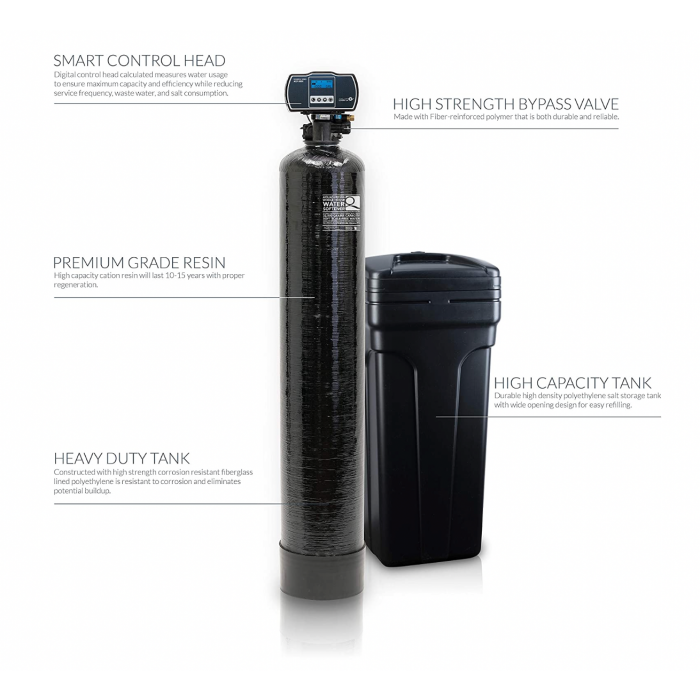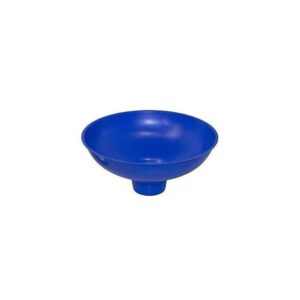Description
Whole House Water Softener
Indulge yourself with the luxury of spa quality softened water.
The Oceanic Whole House Water Softening System is built to provide Soft, scale and spot free water for the entire house.
The system can treat up to 48,000 Grain of hardness, perfect for household size of 3-4 bathrooms and up to 5 people. Its built-in advanced digital control console allows precise backwashing only when it’s needed, saving hundreds of gallons of water.
- Reduces hardness in the water, and eliminates scale, spot build up for the entire home.
- Rated to treat 48,000 Grains of Hardness by removing skin damaging hard minerals like iron and magnesium that clog up the skin pore and causes irritation.
- Equipped with Aquatrol Advanced Digital On-Demand Meter Control Head, in and out bypass, 1″ NPT Male Adapter (or 3/4″), and pre-filled premium quality resin.
- Featured, time delayed, metered and manual double backwash for optimum regeneration, cleaning, and performance.
This complete water softener comes with Fine Mesh Resin 10 x 54 Black USA Mineral Tank loaded with 1.5 cubic foot of Fine Mesh Resin Black Brine Tank with Safety Float 1 inch (or ¾”) Noryl Plastic Bypass Aquatrol 56SE Metered Control Valve.
WHOLE HOUSE WATER SOFTENERS
The typical water softener is a mechanical appliance that’s plumbed into your home’s water supply system. All water softeners use the same operating principle: They trade the minerals for something else, in most cases sodium. The process is called ion exchange.
The heart of a water softener is a mineral tank. It’s filled with small polystyrene beads, also known as resin or zeolite. The beads carry a negative charge. Calcium and magnesium in water both carry positive charges. This means that these minerals will cling to the beads as the hard water passes through the mineral tank. Sodium ions also have positive charges, albeit not as strong as the charge on the calcium and magnesium. In the traditional water softeners, when a very strong brine solution is flushed through a tank that has beads already saturated with calcium and magnesium, the sheer volume of the sodium ions is enough to drive the calcium and magnesium ions off the beads. Water softeners have a separate brine tank that uses common salt to create this brine solution.
In normal operation, hard water moves into the mineral tank and the calcium and magnesium ions move to the beads, replacing sodium ions. The sodium ions go into the water. Once the beads are saturated with calcium and magnesium, the unit enters a 3-phase regenerating cycle. First, the backwash phase reverses water flow to flush dirt out of the tank. In the recharge phase, the concentrated sodium-rich salt solution is carried from the brine tank through the mineral tank. The sodium collects on the beads, replacing the calcium and magnesium, which go down the drain. Once this phase is over, the mineral tank is flushed of excess brine and the brine tank is refilled
Sizing Your Softener:
Water hardness can be reported in “grains per gallon” (gpg), “parts per million” (ppm) or “milligrams per liter” (mg/l). Most of the industry calculates softener size using gpg. You can divide ppm and mg/l by 17.1 to obtain your hardness value in grains per gallon.
You will also need to account for the iron and manganese in your water, and a quick way to get this value is to multiply your iron and manganese concentration (in ppm or mg/l) by a factor of 4. Add this number to the hardness value you determined above. The resulting total value is similar to a “compensated” hardness value, and will better serve to size your softener.
In the example below we will use 4 people in the home and a hardness value of 10 grains per gallon, and iron concentration of 2 ppm.
Multiply 4 people in the home x 75 gallons water usage per person per day x (10 grains hardness + (2 ppm iron x 4)) = 5,400 grains of hardness to be removed per day. So with a 32,000 grain system, set capacity would be about 26,000 grains (20% lower than actual – reserve capacity), and a metered unit would regenerate approximately every 5 days (26,000 divided by 5,400), which is acceptable.
Use the formula above to adjust for the number of people actually living in your home, and your specific water hardness.
With normal to low levels of iron in your water, you can size your softener to regenerate between every 5 to 10 days. With higher levels of iron (5 mg/l and higher) and manganese (1 mg/l and higher), it’s better to size a system to regenerate more frequently, in order to keep the resin bed free of accumulated deposits. In this case, a regeneration every three to five days may be required. If you have very high iron levels in your water, please contact us by email or telephone for a sizing recommendation.
METERED SOFTENING WATER SYSTEMS.








Reviews
There are no reviews yet.